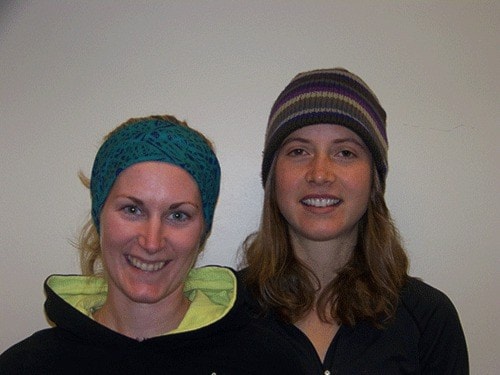By Laura Smit and Cali Olleck
While we rarely see them, honeybees spend their days buzzing from flower to flower, collecting nectar and moving pollen from one plant to the next. As honeybees quietly go about their business they act as the primary pollinators for 1/3 of food crops throughout the world. In British Columbia, agricultural production from crops pollinated by honeybees in 2008 had an estimated annual value of $160 million. Unfortunately, an unprecedented decline in global honeybee populations has recently been earning widespread media attention. This decline is particularly alarming to farmers, some of whom rely exclusively on the insects to pollinate their crops.
A single cause has not been identified for the honeybees’ problems, but a combination of factors that weaken and stress the bees is likely to blame. Globally, the parasitic varroa mite, agricultural pesticide use, undue stress from moving bees long distances for crop pollination, and a loss of suitable nectar and pollen sources have been cited as possible reasons. Provincially, outbreaks of the mites and long-distance travel have been identified as challenges. Regardless of the cause, if we want fresh, local fruits and veggies in our diets, we must ensure honeybee populations remain healthy.
The Kootenays are home to a bustling beekeeping scene; local communities show their support for honeybees in a variety of ways. The Kootenay Local Agriculture Society (KLAS), based in Castlegar, has offered a popular Beekeeping for Beginners course for several years. The success of this course is a tribute to the local growth of interest in apiculture – the study and management of honeybee colonies. The KLAS also provides a wide array of beekeeping resources, available to the public, on their website. Education about bees and pollinators is not only offered to aspiring beekeepers but also to students in the local school district. Wild Voices for Kids, a program aimed at providing free environmental and heritage education programs to students, offers students the opportunity to learn about the importance of pollinators in creating healthy ecosystems.
Moreover, increased awareness about the importance of local food production has resulted in a greater demand for locally produced honey, which has provided continued support to apiaries in our region. Considering the variety of businesses and educational opportunities that focus on bees, it is evident that people in the Kootenays have a genuine interest in contributing to a healthy, local agriculture system that protects and enhances honeybee populations and habitat.
Even with the good buzz, however, not all local governments have jumped on board. Bylaws in Castlegar and Nelson do not permit beehives to be kept within city limits. Kaslo allows beehives, but only if electrical fencing is used to deter curious animals from getting too close. Recently, public pressure and efforts to create “greener” cities have pushed cities such as Vancouver and Seattle to create bylaws supporting urban beekeepers. Hopefully local municipalities will begin to recognize the value of honeybees within city limits and follow suit.
While it may continue to be the case that you are not be permitted to keep beehives on your property, you can still show your support for these industrious and valuable insects – there are many ways to make your yard pollinator-friendly. Here are a few tips that can be used to help the bees have a brighter future, for everyone’s benefit:
• Plant native, not exotic, flower species – bees are more likely to visit flowers with which they have evolved.
• Ensure food is available all season – plant a variety of flowers that bloom throughout the spring and summer.
• Plant flowers in clusters – bees are more apt to visit a dense patch of flowers than a single flower.
If we all do our part, we can keep honeybee populations healthy and local food on our plates.
